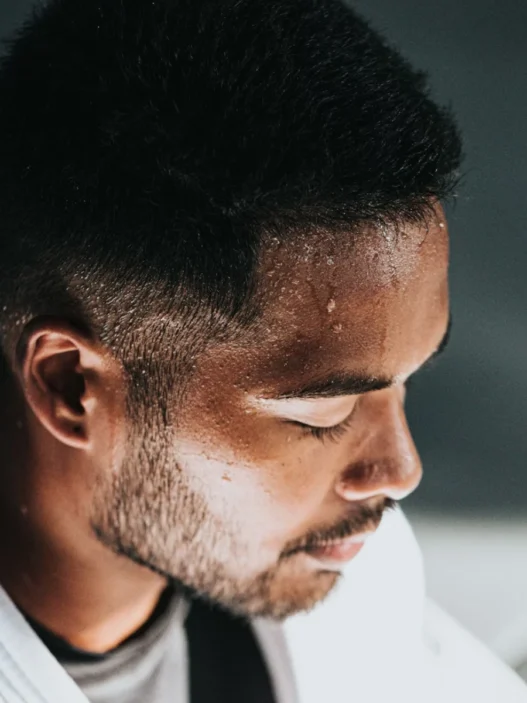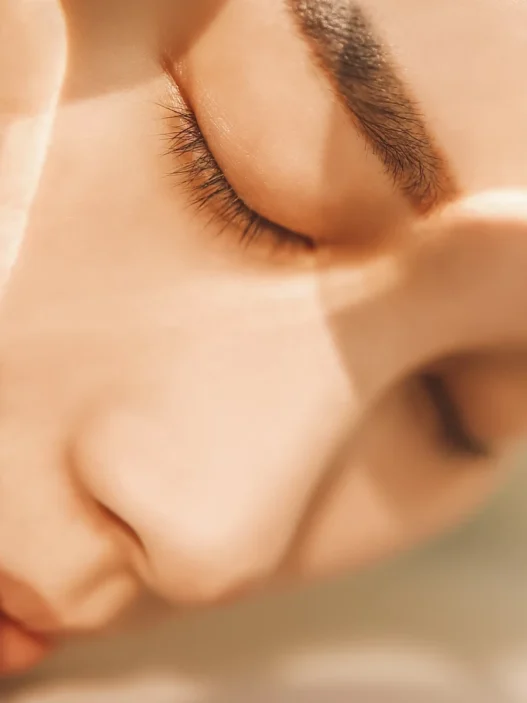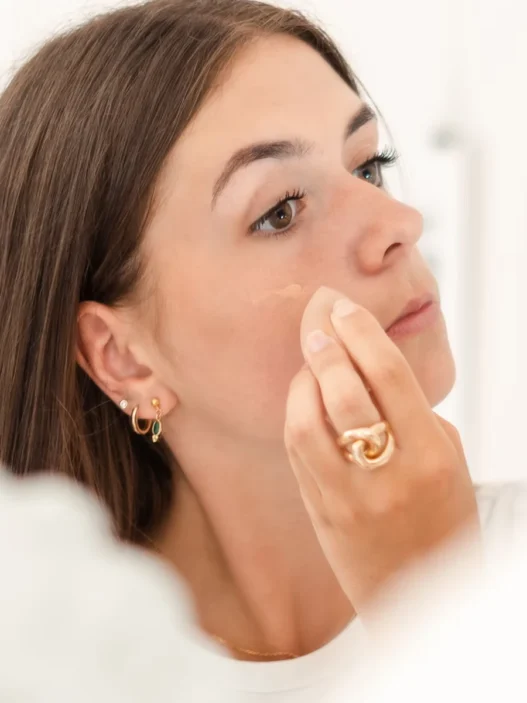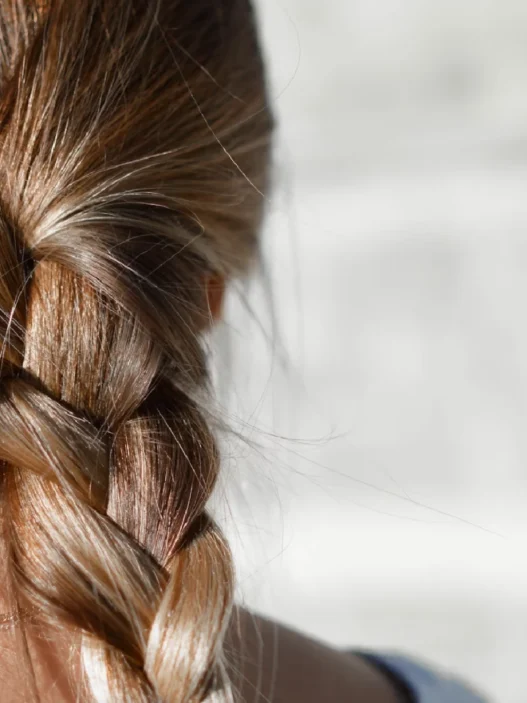Hair fall can be frustrating, especially when you’re unsure of what’s causing it. Whether you’re dealing with early thinning or more advanced hair loss, understanding the root causes of hair loss is essential to choosing the right treatment.
The intense year-round heat, high UV exposure, hard desalinated water, and frequent hair styling practices contribute to a noticeable increase in hair fall, receding hairlines, and reduced hair density. Add to that the stress of urban living, hormonal imbalances, and dietary deficiencies—and you have a perfect storm for hair loss.
Below, we break down the key medical, environmental, and lifestyle-related hair loss triggers affecting men and women across the GCC.
What’s Behind Hair-Loss?
According to a recent survey by YouGov MENA, over 63% of residents in the UAE reported experiencing moderate to severe hair thinning by age 35. Factors like heat, desalinated water, and hormonal shifts contribute to this regional trend.
Genetics
One of the most common causes of hair loss is androgenetic alopecia, also known as male-pattern or female-pattern baldness. This hereditary condition is linked to a hormone called Dihydrotestosterone (DHT), which causes hair follicles to shrink over time. In men, this typically leads to a receding hairline or bald spots, while women often experience diffuse thinning along the crown.
People of Middle Eastern and South Asian descent are often genetically predisposed to DHT sensitivity. If hair thinning runs in your family, early intervention is key. FDA-approved treatments like minoxidil (available over the counter in GCC pharmacies) have been clinically proven to slow hair loss and promote regrowth.
Talk to a licensed dermatologist or trichologist in your area for a scalp analysis and to determine whether DHT-blocking treatments are right for you.
Thyroid, PCOS, Stress & Nutritional Deficiencies
Hormonal imbalances are another major trigger for hair fall, especially among women in the GCC. Thyroid disorders, Polycystic Ovary Syndrome (PCOS), and elevated cortisol levels due to chronic stress can all disrupt the hair growth cycle. Additionally, deficiencies in iron, vitamin D, biotin, and B-complex vitamins are commonly found in women experiencing significant shedding.
For example, women with PCOS often experience elevated androgens, which can mimic the effects of male-pattern hair loss. Similarly, untreated hypothyroidism or anaemia may cause diffuse thinning or brittle strands.
Book a comprehensive blood panel to check for hormonal or nutritional imbalances if you’re experiencing unusual hair fall.
Heat, Humidity, Chlorine & Hard Water
The harsh environmental conditions in the Gulf can take a toll on your scalp and strands. Extreme heat, low humidity indoors, and chlorinated water from pools often strip your hair of its natural moisture. Additionally, most cities across the UAE, Saudi Arabia, and Qatar have hard water—rich in minerals like calcium and magnesium—that builds up on the scalp and leads to brittle, dull hair.
These factors can irritate the scalp, cause scalp inflammation, and weaken the hair shaft, making it more prone to breakage and shedding. Many residents also report experiencing seasonal shedding spikes during hot summer months, due to increased UV exposure and sweating.
Pro Tip: Use a clarifying shampoo once a week to remove mineral buildup and a deep conditioning mask to rehydrate your hair.
Invest in a shower filter designed for hard water—a growing trend across Dubai and Riyadh—for noticeably softer hair and healthier scalp conditions.
Tight Hairstyles
Frequent use of tight ponytails, buns, braids, hijab styles, or hair extensions can lead to a condition known as traction alopecia—hair loss caused by constant tension on the scalp. This is particularly common around the temples, hairline, and nape of the neck, and is often mistaken for genetic hair loss.
Over time, the repeated pulling can cause permanent damage to hair follicles. This type of hair loss is preventable and often reversible if caught early. Switching to looser hairstyles, using satin scarves or hijab under-caps, and avoiding heavy extensions can significantly reduce the strain.
Each of these factors can play a significant role in your hair loss journey. The good news is that many causes are manageable with the right lifestyle shifts, medical support, and targeted hair care products.
Everyday Scalp & Haircare Tips to Support Regrowth
Supporting your hair from the root doesn’t always require expensive treatments—small daily habits can make a significant impact when practiced consistently. Here are simple, expert-recommended ways to create a growth-friendly environment for your scalp and strands.
Weekly Scalp Massages with Rosemary or Peppermint Oil
Essential oils like rosemary and peppermint are clinically linked to improved scalp circulation and follicle stimulation. Mix 5–10 drops with a lightweight carrier like jojoba oil, and gently massage it into the scalp once or twice a week. This routine helps reduce inflammation, nourish follicles, and promote natural hair regrowth over time.
Switch to Sulfate-Free Shampoos with Active Ingredients
Avoid harsh sulfates that strip the scalp’s protective oils. Instead, opt for shampoos that contain ingredients like caffeine, biotin, niacinamide, or red onion extract—all known to support stronger hair and reduce shedding. These are especially beneficial for those living in the GCC, where hard water and heat can dry out the scalp.
Be Gentle with Wet Hair
Wet hair is more vulnerable to breakage. Use a microfiber towel to gently blot dry your strands and switch to a satin or silk pillowcase to reduce nighttime friction and hair shaft damage. Avoid brushing wet hair—detangle with fingers or a wide-tooth comb when it’s slightly damp.
Eat for Hair Health
A healthy scalp starts with proper nutrition. Include foods rich in omega-3 fatty acids (salmon, flaxseeds), zinc (pumpkin seeds, chickpeas), iron (spinach, lentils), and biotin (eggs, almonds) to support strong, resilient hair from the inside out. Consider supplements only under the guidance of a healthcare professional.
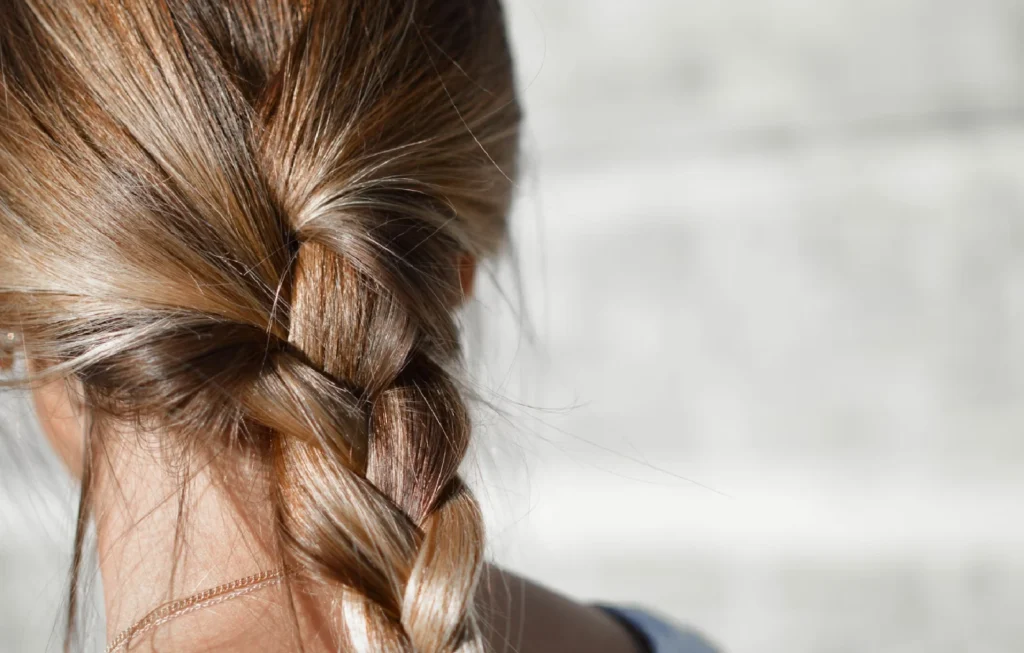
Bestselling Products to Support Hair Growth Naturally
If you’re looking to upgrade your routine with trusted products, here are some globally loved options that align perfectly with the scalp and haircare tips shared above.
For Scalp Massages (Rosemary, Peppermint, and Carrier Oils):
Start with Mielle Rosemary Mint Scalp & Hair Strengthening Oil—it’s enriched with biotin and ideal for stimulating the scalp. If you prefer to make your own blend, try Majestic Pure’s Peppermint Oil mixed with Now Solutions Jojoba Oil for a lightweight, non-greasy finish. These oils are great for weekly use to improve blood circulation and scalp health.
For Washing Your Hair (Full of Active Ingredients)
If you’re dealing with hair thinning, Alpecin Caffeine Shampoo is a popular choice for boosting follicle activity. For added nourishment, OGX Biotin & Collagen Shampoo is a great pick—it thickens the hair and strengthens each strand. If you’re looking for a gentle shampoo, try Cerave Hydrating shampoo, while Nizoral Shampoo helps with dandruff and irritation.
For Drying and Sleeping (Frizz-Free Towel and Pillowcase)
Reduce breakage with the Kitsch Microfiber Hair Towel, which absorbs water quickly without damaging strands. At night, sleep on a Kitsch Satin Pillowcase to reduce friction and keep your hair smooth and healthy.
For Scalp Circulation and Daily Massage
For daily scalp stimulation, the Ross Scalp Massager is a gentle tool that fits in your hand and helps increase blood flow. This is perfect for using during shampooing or while massaging oils into your scalp.
Pro Tip: Try the Inversion Method—a 4-minute daily scalp massage while your head is tilted upside down. This technique increases blood flow to the scalp and may encourage hair growth when practiced consistently, especially when combined with essential oils.
PRP and GFC for Hair Loss
One of the most searched non-surgical treatments for hair thinning in the GCC is PRP (Platelet-Rich Plasma) and the newer GFC (Growth Factor Concentrate) therapy. These dermatologist-administered procedures are rapidly gaining traction due to their regenerative benefits and minimal downtime.
What is PRP for Hair?
PRP therapy involves drawing a small amount of your own blood, processing it in a centrifuge to isolate platelet-rich plasma, and injecting it directly into the scalp. These platelets are rich in growth factors that stimulate inactive hair follicles, increase blood supply, and support new hair growth.
What is GFC Therapy?
GFC is an advanced version of PRP. It extracts and concentrates only the most potent growth factors from your blood—without unnecessary cells—offering more focused and efficient follicle stimulation. Many clinics in the UAE, Saudi Arabia, and Qatar now offer GFC as a superior alternative for those seeking quicker results and reduced inflammation post-procedure.
Benefits of PRP/GFC for Hair Regrowth
- Stimulates new hair growth in thinning areas
- Thickens hair shafts and increases overall volume
- Reduces hair shedding over time
- Safe and biocompatible, as it uses your own blood—no risk of allergic reaction
- Minimal downtime, with most clients returning to normal activity within 24–48 hours
Who Should Consider PRP or GFC?
These therapies are best for:
- Individuals with early-stage androgenetic alopecia (male or female pattern baldness)
- People noticing diffuse thinning or a widening part
- Patients looking for natural, non-pharmaceutical solutions
- Those not eligible or not responding well to topical treatments like minoxidil
Both procedures work best when hair follicles are still alive but dormant. They’re not suitable for areas with complete baldness or scarring alopecia, where hair follicles are permanently damaged.
Disclaimer: The results of PRP and GFC vary between individuals and should be discussed in detail with a licensed medical professional. These are medical treatments and are not guaranteed to reverse all types of hair loss.
When to See a Dermatologist or Trichologist
While hair fall is common and often temporary, certain warning signs signal an underlying issue that needs professional diagnosis. If you’re experiencing sudden or excessive shedding, bald patches, or persistent scalp inflammation, it’s time to consult a dermatologist or certified trichologist in your region.
When Hair Loss Needs Medical Attention:
- Sudden hair loss in clumps
- Visible bald spots or receding hairline
- Itchy, flaky, or inflamed scalp that doesn’t improve
- Hair thinning that worsens over weeks or months
- Accompanying symptoms like fatigue, acne, or irregular periods (suggesting hormonal issues like PCOS or thyroid disorders).
Don’t delay diagnosis—book an appointment with a licensed hair and scalp specialist today to prevent permanent follicle damage. These specialists can identify root causes—ranging from hormonal imbalances to autoimmune disorders—and guide you toward targeted treatments.
Note: PRP and GFC are medical procedures that should only be administered by a licensed dermatologist or certified aesthetic physician. Ensure that the clinic follows sterile, FDA- or DHA-approved protocols, and always verify practitioner credentials before proceeding.














